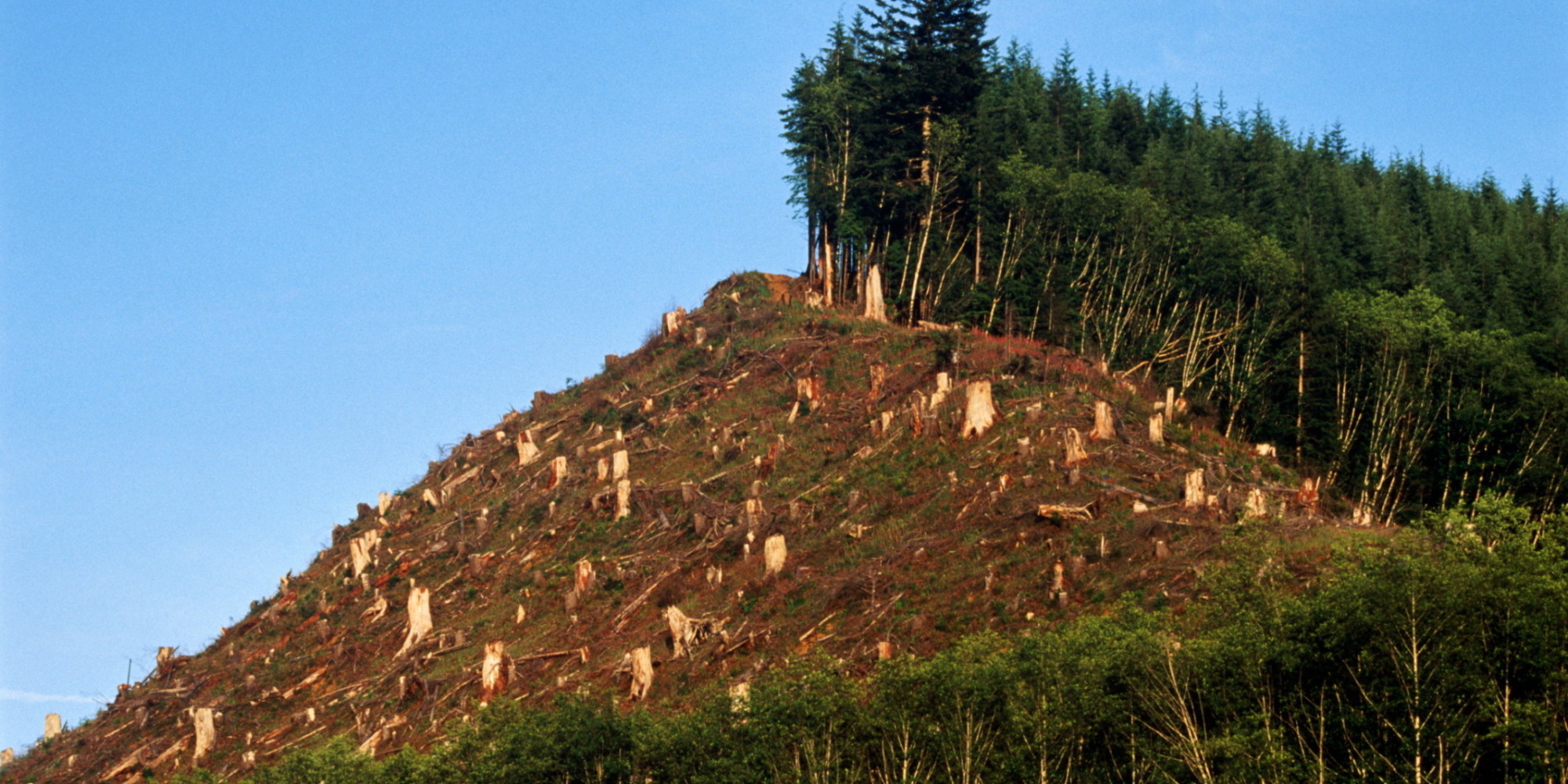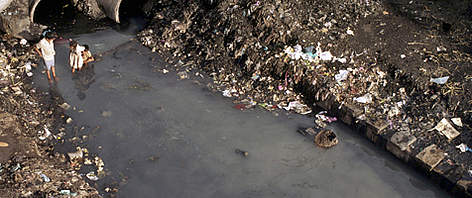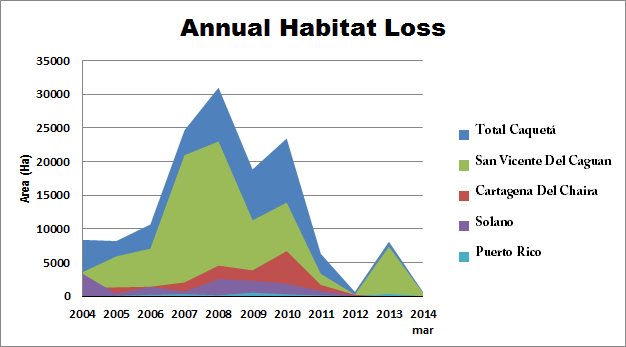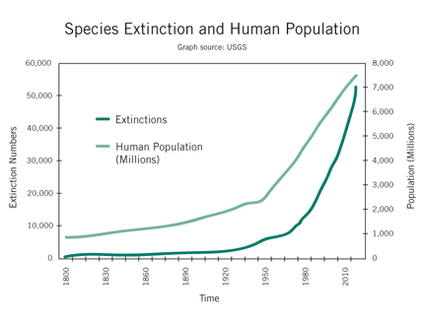We know what this is. We’ve seen all the commercials containing graphic photos of slaughtered elephants and rhinos, bleeding from where their tusks and horns used to be. Species extinction is a serious problem today and while the world is trying to prevent this from occurring, we can’t prevent it at the speed it’s happening. 
It’s frightening but true: Our planet is now in the midst of its sixth mass extinction of plants and animals — the sixth wave of extinctions in the past half-billion years. We’re currently experiencing the worst spate of species die-offs since the loss of the dinosaurs 65 million years ago. Although extinction is a natural phenomenon, it occurs at a natural “background” rate of about one to five species per year. Scientists estimate we’re now losing species at 1,000 to 10,000 times the background rate, with literally dozens going extinct every day. It could be a scary future, with as many as 30 to 50 percent of all species possibly heading toward extinction by mid-century.
Unlike past mass extinctions, caused by events like asteroid strikes, volcanic eruptions, and natural climate shifts, the current crisis is almost entirely caused by us — humans. In fact, 99 percent of currently threatened species are at risk from human activities, primarily those driving habitat loss, introduction of exotic species, and global warming. Because the rate of change in our biosphere is increasing, and because every species’ extinction potentially leads to the extinction of others bound to that species in a complex ecological web, numbers of extinctions are likely to snowball in the coming decades as ecosystems unravel. 
During my first semester, I took a seminar class dealing with the endangerment of elephants and rhinos primarily, as well as other species. We learned about their classifications on CITES (Convention on International Trade in Endangered Species of Wild Fauna and Flora) and how quickly they are being wiped out by poachers and natural causes. Unfortunately it’s more than just natural causes and poaching that is killing these species. For elephants specifically, they need a lot of land to live and survive, and as more of their terrain is being taken up by humans, the environment isn’t sustainable for them to survive. Not only are humans taking their homes, sometimes farmers or locals kill them if their land or families are threatened. There is a huge debate going on in the world right now over the ivory trade and whether or not it should be legal in certain countries and even globally. I participated in a mock debate in my seminar about the ivory trade. It’s really interesting how truly controversial this topic is, because no matter what elephants are going extinct an we don’t know the right solution for it.
In the past 500 years, we know of approximately 1,000 species that have gone extinct, from the woodland bison of West Virginia and Arizona’s Merriam’s elk to the Rocky Mountain grasshopper, passenger pigeon and Puerto Rico’s Culebra parrot — but this doesn’t account for thousands of species that disappeared before scientists had a chance to describe them. Nobody really knows how many species are in danger of becoming extinct. Noted conservation scientist David Wilcove estimates that there are 14,000 to 35,000 endangered species in the United States, which is 7 to 18 percent of U.S. flora and fauna. The IUCN has assessed roughly 3 percent of described species and identified 16,928 species worldwide as being threatened with extinction, or roughly 38 percent of those assessed. In its latest four-year endangered species assessment, the IUCN reports that the world won’t meet a goal of reversing the extinction trend toward species depletion by 2010.
Species diversity ensures ecosystem resilience, giving ecological communities the scope they need to withstand stress. Thus while conservationists often justifiably focus their efforts on species-rich ecosystems like rainforests and coral reefs — which have a lot to lose — a comprehensive strategy for saving biodiversity must also include habitat types with fewer species, like grasslands, tundra, and polar seas — for which any loss could be irreversibly devastating. And while much concern over extinction focuses on globally lost species, most of biodiversity’s benefits take place at a local level, and conserving local populations is the only way to ensure genetic diversity critical for a species’ long-term survival.
Some major solutions of this issue would be protecting and restoring habitats, which goes along with what I talked about in my last post about deforestation. Another big solution would be efforts against poaching and wildlife trade. This should be done in partnership with the locals in each country, so that wildlife conservation is in their social and economic interest.
As for us as U.S. citizens, we can help in ways I described when discussing deforestation. We need to reduce our carbon footprint and we can do this in the easiest ways such as eating less red meat. We can also help out by spreading the word. Share these issues with other, get the conversations going. Avoiding the issue is not going to solve anything. I know some might think we can’t do much, but if we all band together and just change our daily lives in the simplest ways, we can truly make a difference.
10 Ways You Can Help Stop the Sixth Mass Extinction
Five of the World’s Biggest Environmental Problems



 Mining.
Mining.
 While this is happening, I just recently watched a video in my chemistry class that discussed the future possibility of transportation one day running on water. I’d like to know how that is going to work, when we barely have enough water to live our daily lives.
While this is happening, I just recently watched a video in my chemistry class that discussed the future possibility of transportation one day running on water. I’d like to know how that is going to work, when we barely have enough water to live our daily lives. Due mainly to warming temperatures, acidifying oceans and pollution, close to 30% of the ocean’s reefs have already vanished since 1980, including half of the reefs in the Caribbean and 90% of the Philippines’ coral reefs, and scientists forecast that Australia’s Great Barrier Reef may be dead by the year 2050 and all coral reefs could be gone by the end of the century. As human populations continue to grow, so will our footprint on the interconnected, ecological infrastructures of life.
Due mainly to warming temperatures, acidifying oceans and pollution, close to 30% of the ocean’s reefs have already vanished since 1980, including half of the reefs in the Caribbean and 90% of the Philippines’ coral reefs, and scientists forecast that Australia’s Great Barrier Reef may be dead by the year 2050 and all coral reefs could be gone by the end of the century. As human populations continue to grow, so will our footprint on the interconnected, ecological infrastructures of life.
